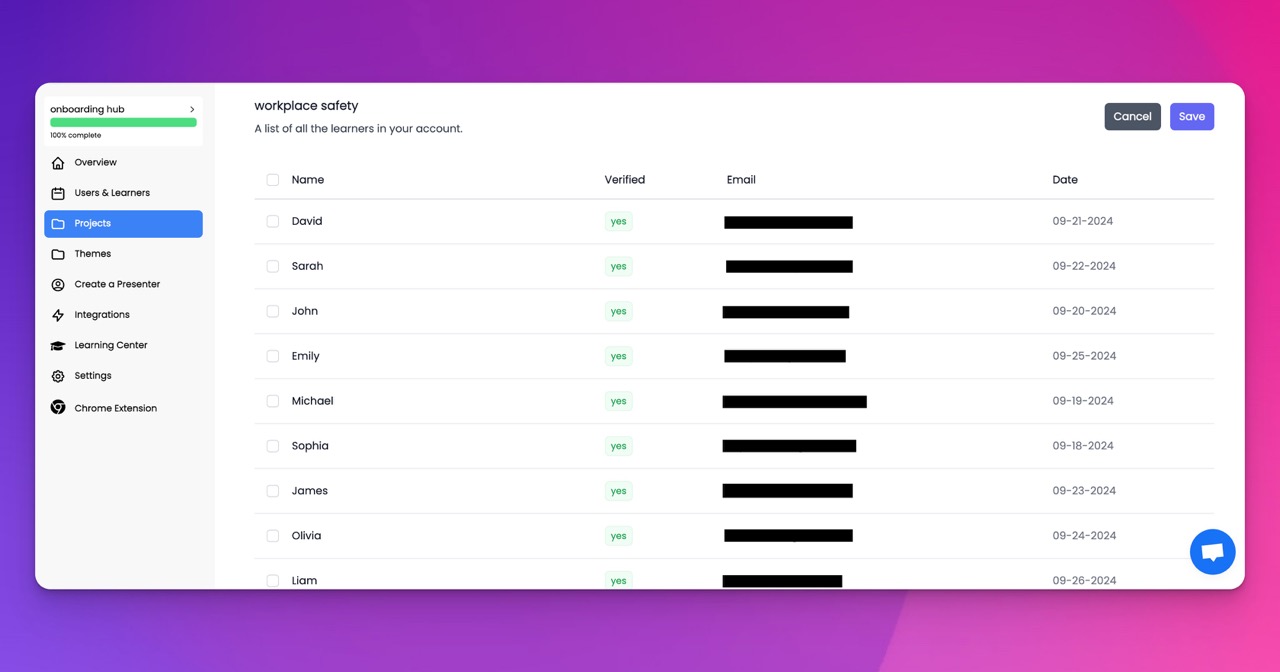🎉 Trainday now integrates with Zendesk and Hubspot 🎉 Trainday now integrates with Zendesk and Hubspot 🎉 Trainday now integrates with Zendesk and Hubspot
🎉 Trainday now integrates with Zendesk and Hubspot
🎉 Trainday now integrates with Zendesk and Hubspot
Contact
Small Modules, Big Results - Enhancing Safety Training with Microlearning
Workplace safety is a cornerstone of productivity, employee well-being, and operational success. Yet, traditional safety training often falls short, leaving employees disengaged and struggling to retain vital information. Enter microlearning: a revolutionary approach that transforms safety training into an efficient, engaging, and impactful experience.
With small, focused modules designed to deliver big results, microlearning is redefining how organizations approach safety training. Let’s explore why this method is a game-changer and how it can elevate safety practices in your workplace.
The Microlearning Revolution
Microlearning delivers training content in short, digestible bursts—typically lasting 3 to 10 minutes. These modules focus on specific skills or topics, ensuring that employees receive targeted, actionable information without feeling overwhelmed.
For safety training, this format is particularly effective. By breaking down complex procedures into manageable lessons, microlearning ensures that employees not only understand but also retain the information they need to stay safe.
Why Microlearning Delivers Big Results in Safety Training
1. Focused Content for Maximum Impact
Safety training covers a wide range of topics, from hazard identification to emergency procedures. Traditional methods often overwhelm employees with too much information at once. Microlearning, by contrast, delivers focused modules that hone in on specific topics, ensuring better comprehension and retention.
For example, a series of microlearning modules might include:
Proper use of personal protective equipment (PPE)
Recognizing and reporting workplace hazards
Step-by-step fire evacuation procedures
This targeted approach allows employees to master each concept before moving on to the next.
2. Improved Knowledge Retention
Research shows that learning in small, focused increments leads to better long-term retention. Microlearning aligns with how the brain processes and stores information, making it an ideal method for safety training.
By revisiting key safety concepts through spaced repetition, employees can reinforce their knowledge over time, ensuring that critical protocols remain fresh in their minds.
3. Engaging and Interactive Learning
Traditional safety training methods, such as long lectures or dense manuals, can be monotonous and uninspiring. Microlearning’s interactive format—featuring videos, simulations, quizzes, and scenarios—keeps employees engaged and motivated.
For example, an interactive module on chemical spill cleanup might simulate a real-life scenario, requiring employees to make decisions about containment and cleanup steps. This hands-on approach not only makes learning more enjoyable but also prepares employees to apply their knowledge in real-world situations.
4. Flexibility for Busy Schedules
In fast-paced work environments, pulling employees away for lengthy training sessions can be disruptive. Microlearning provides the flexibility to complete modules during downtime, on breaks, or even on-the-go.
With mobile-friendly content, employees can access safety training whenever and wherever it’s convenient, ensuring that learning fits seamlessly into their daily routines.
5. Just-in-Time Learning
Safety risks can arise at any moment, and employees need to be prepared to respond quickly. Microlearning’s "just-in-time" approach allows employees to access specific training modules in real time to address immediate challenges.
For instance, an employee encountering unfamiliar machinery can quickly review a 5-minute lesson on safe operation procedures, reducing the risk of accidents and boosting confidence.
6. Tailored to Role-Specific Needs
Not all safety training applies to every role. Microlearning allows organizations to customize modules to meet the unique safety requirements of different positions, ensuring relevance and effectiveness.
Examples include:
Construction Workers: Modules on ladder safety, heavy machinery operation, and fall prevention
Healthcare Professionals: Lessons on infection control, patient handling, and biohazard disposal
Office Employees: Training on ergonomic best practices, fire evacuation, and electrical safety
This tailored approach ensures that every employee receives training that’s directly applicable to their work environment.
Implementing Microlearning for Safety Training: Steps to Success
Break Down Complex Topics Identify key safety protocols and divide them into bite-sized lessons. Each module should focus on a single topic or skill.
Leverage Technology Use eLearning platforms like Trainday to create, distribute, and track microlearning modules. Look for tools that support multimedia content and mobile optimization.
Make It Engaging Incorporate videos, animations, and quizzes to create an interactive and memorable learning experience.
Reinforce Learning Use spaced repetition to revisit key concepts over time, helping employees retain critical information.
Monitor and Optimize Track employee progress and collect feedback to identify gaps in understanding and refine your training program.
The Long-Term Benefits of Microlearning in Safety Training
Fewer Incidents: Better retention and immediate application of safety protocols reduce workplace accidents and injuries.
Increased Compliance: Focused modules ensure that employees understand and adhere to regulatory requirements.
Higher Engagement: Interactive and role-specific training boosts employee involvement and satisfaction.
Cost Savings: Efficient, scalable microlearning reduces training costs while delivering high-impact results.
Accelerate Compliance.
Deliver OSHA-Ready Courses Instantly.
Empower your team with data-driven training solutions tailored to your industry's safety standards. Stay compliant, reduce risks, and boost productivity with AI-powered course creation.
